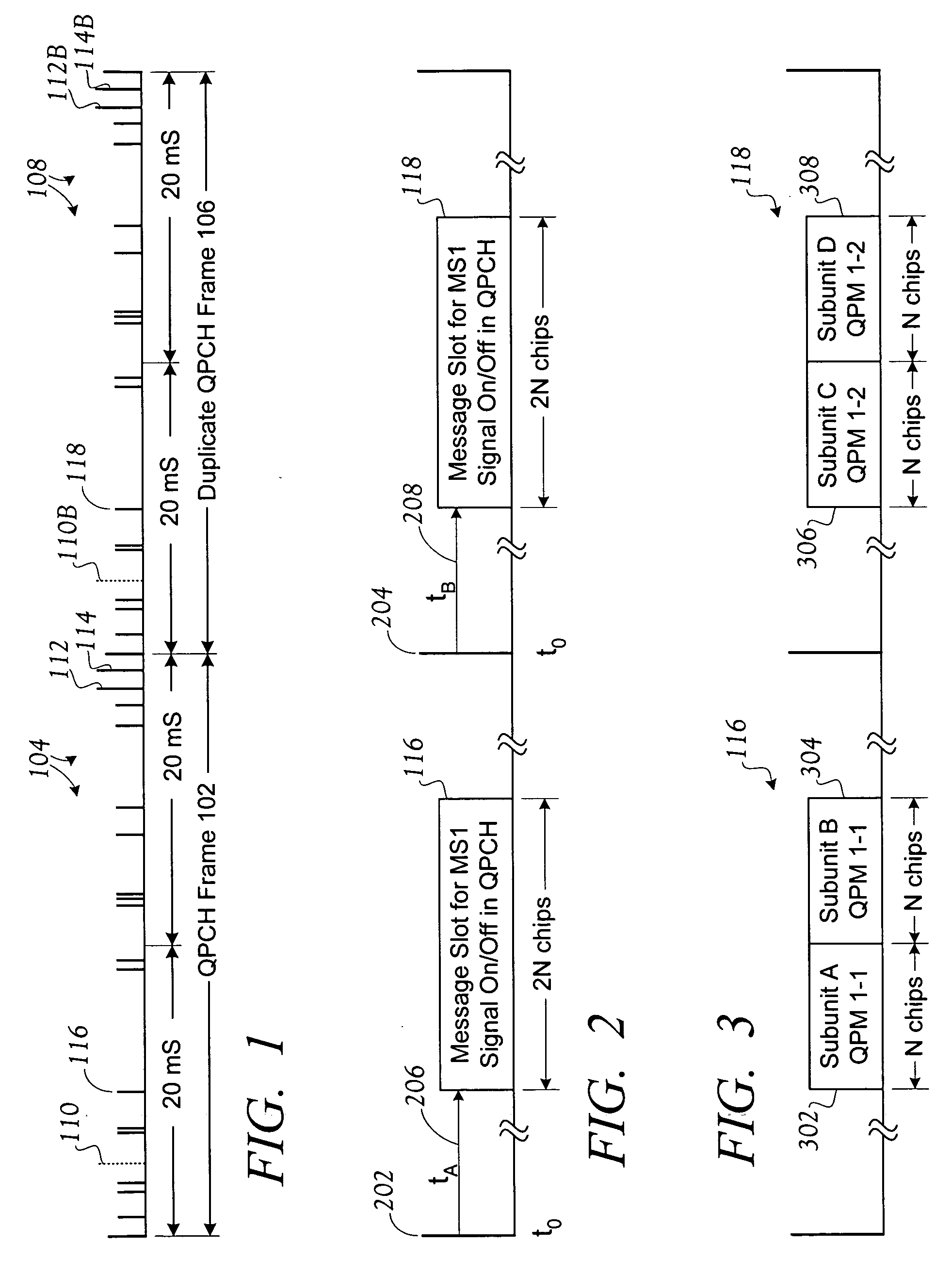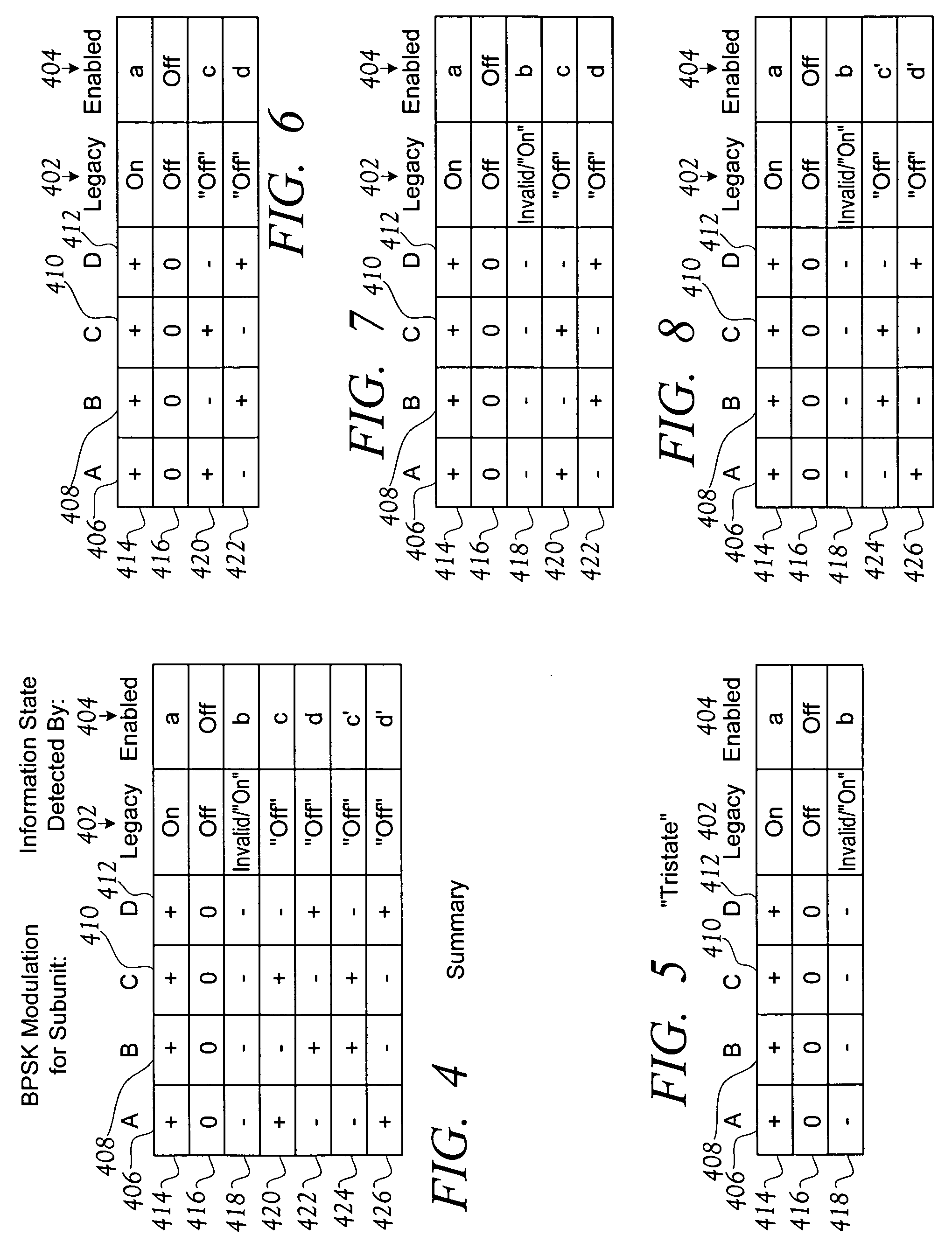Legacy-compatible signaling extension method for broadcast/multicast service indications
a signal extension and legacy-compatible technology, applied in the field of legacy-compatible signal extension methods for broadcast/multicast service indications, can solve the problems of reducing the standby time capacity of enabled mss, affecting the idle device standby time,
- Summary
- Abstract
- Description
- Claims
- Application Information
AI Technical Summary
Benefits of technology
Problems solved by technology
Method used
Image
Examples
Embodiment Construction
Overview
[0027] Some communication systems, such as fiber optic or microwave trunks, may be placed under the control of a single entity for purposes of upgrading. Thereby, all components of such system may be modified concurrently, which provides great flexibility in the changes that may be implemented to improve performance. In many other systems, such as cellular telecommunication systems, ownership of system components may be distributed between a variety of entities, or it may be inconvenient to concurrently upgrade all of the components in an installed base.
[0028] Thus, it is often inconvenient to upgrade or modify all existing system components at one time. Nonetheless, it is desirable to enhance the capabilities of new components as they are added to the system. Consequently, it will be very useful to add new features to new system components in such a way that such new system components are “backward compatible.” Considering transceiver stations in a cellular wireless comm...
PUM
 Login to View More
Login to View More Abstract
Description
Claims
Application Information
 Login to View More
Login to View More - R&D
- Intellectual Property
- Life Sciences
- Materials
- Tech Scout
- Unparalleled Data Quality
- Higher Quality Content
- 60% Fewer Hallucinations
Browse by: Latest US Patents, China's latest patents, Technical Efficacy Thesaurus, Application Domain, Technology Topic, Popular Technical Reports.
© 2025 PatSnap. All rights reserved.Legal|Privacy policy|Modern Slavery Act Transparency Statement|Sitemap|About US| Contact US: help@patsnap.com



